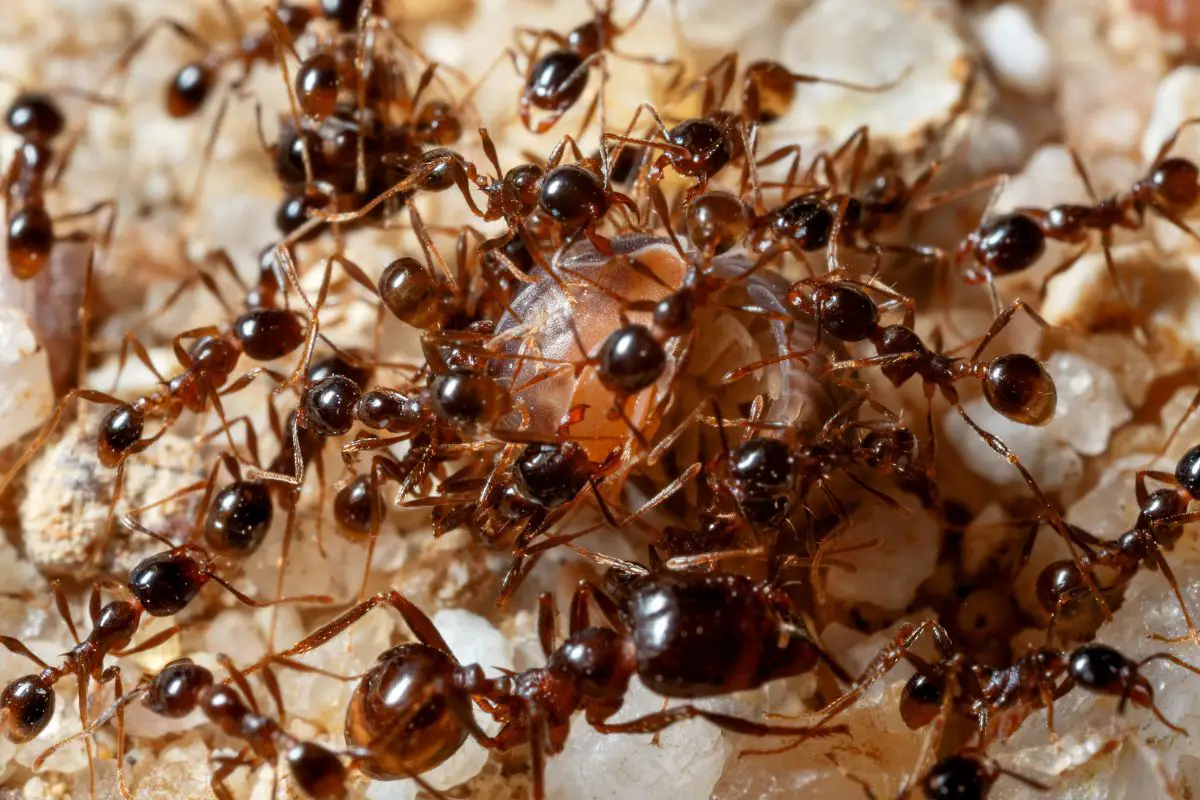
Ants are some of the most fascinating insects in the world. Scientists estimate that there are more than 12,000 ant species, which cover every continent but Antartica. These ant species fall into the suborder of hymenoptera clade, otherwise known as stinging insects.
They share this distinction with bees and wasps. But these aren’t the only insects that share strong similarities with ants. In fact, many insects have evolved explicitly to mimic the way ants act, move, hunt, look, work, and even smell.
So why do they do this and what’s the point? Ant mimicry is a fascinating and complex topic, and there are countless ways that other insects have learned to do it. In this article, we’ll break down the insects that are most similar to ants and what they have in common.
1. The Bees’ Knees
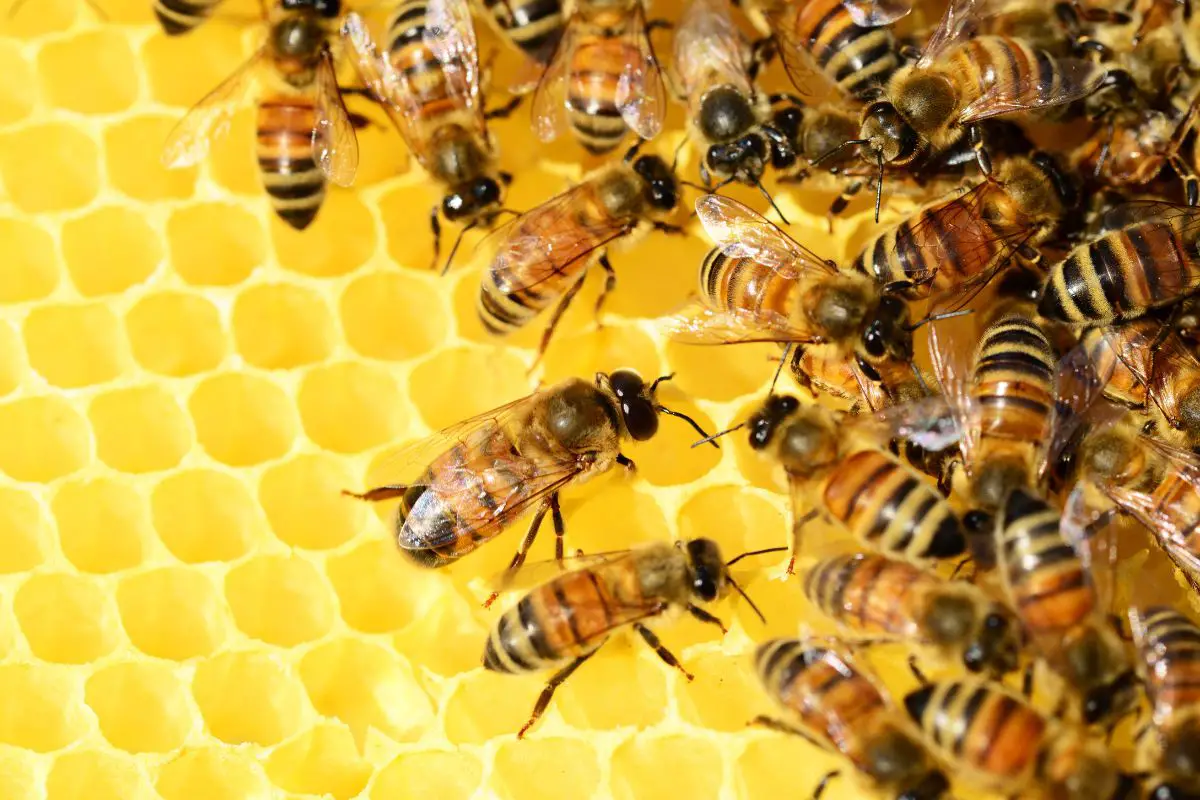
Bees are one of the most important insects on the planet, known for their role in pollination as well as producing honey. They are also one of the most closely related insects to ants, both being categorized under the order hymenoptera as stinging insects. Bees have many unique physical characteristics, including crossing mouth hairs, two sets of wings, jointed antennae, and both mandibles and a proboscis for gathering nectar.
Bees and ants share similarities in their compound eyes, their life cycle, and their communal living headed by a queen who lays eggs. Bees are some of the most complex and vital insects in the world, playing an irreplaceable role in ecology and diversity.
2. Kicking the Wasp Nest
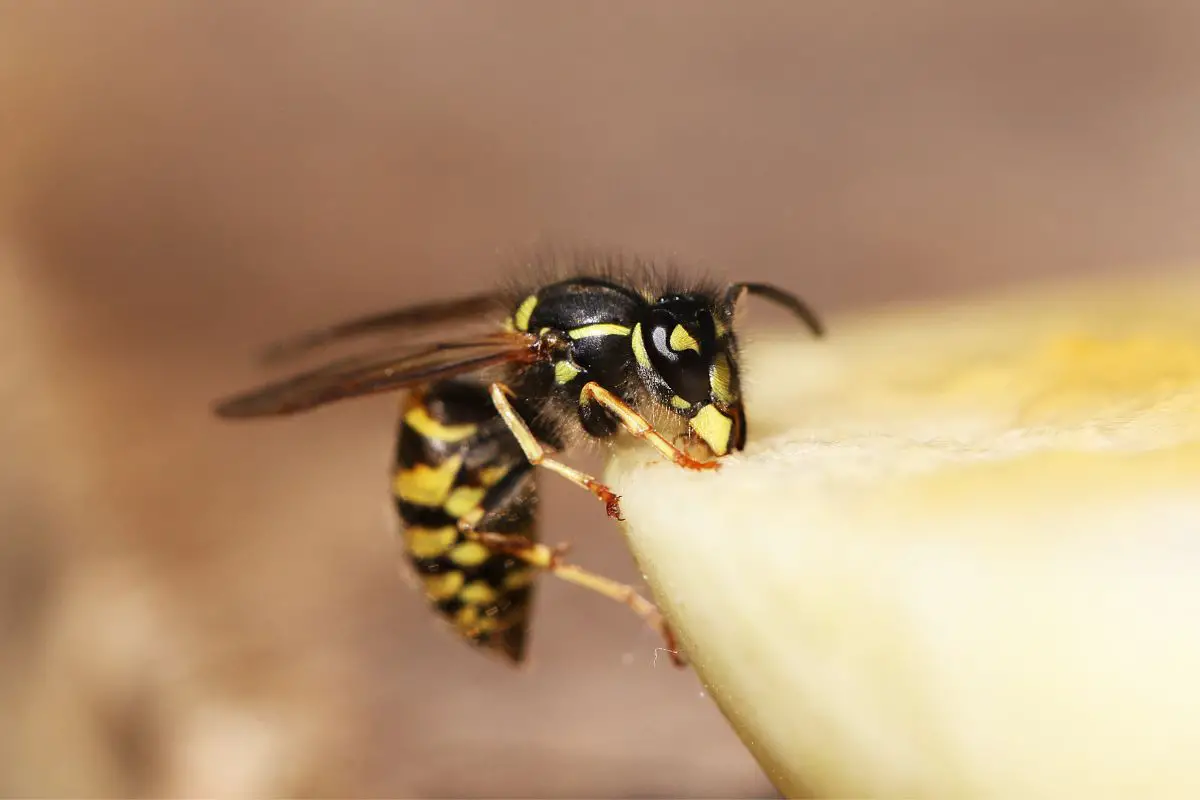
Wasps are related to bees and also fall under the broad category of stinging insects. There are roughly one hundred thousand types of wasps, which are found all over the world. Like ants, wasps have a hard, segmented exoskeleton, compound eyes, and mandibles.
They share other similarities in their social practices, though wasps tend to be more solitary than ants. Lastly, like ants, wasps usually lay their eggs in a nest, with the adults leaving to hunt for food for the larvae. Though they have some distinct differences, wasps are some of the most closely-related insects to ants on the planet.
3. Sawfly Don’t Bother Me

The sawfly is an insect within the order Hymenoptera. This puts them in the same broad category as ants, wasps, and bees. The name sawfly comes from the saw-shaped ovipositor.
Female sawflies use their ovipositors to pierce plants. It is in these cuttings that sawflies lay their eggs. Sawflies are distinguished from ants, wasps, and bees by their lack of a “wasp waist.”
Adult sawflies have a broad connection between their thorax and abdomen. Some sawflies will mimic bees and wasps, even possessing harmless ovipositors that resemble stingers. Larvae resemble caterpillars but lack crochets and have a different number of prolegs.
Most sawflies eat plants but a small number are parasitic.
4. Termite Be Right, Termite Be Crazy
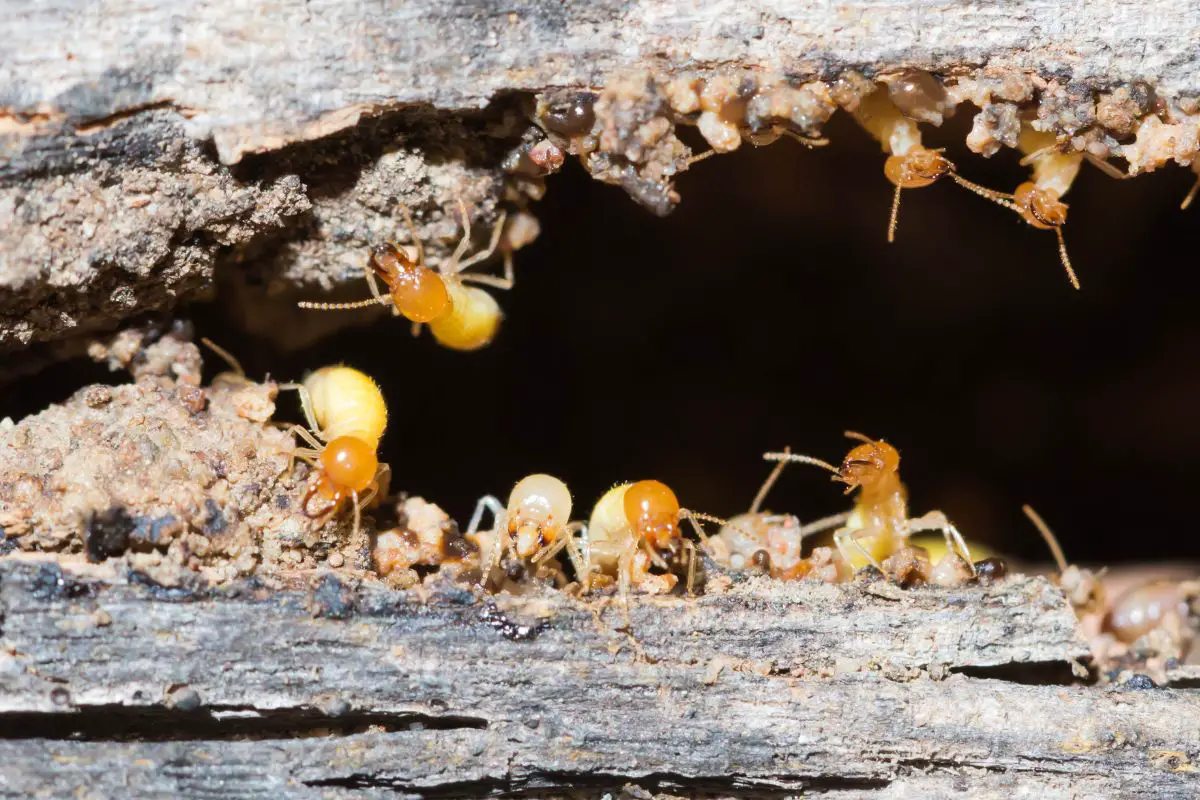
Termites are not closely related to ants but rather cockroaches. Despite sometimes being called “white ants,” they are quite different. Termites likely evolved from cockroaches and are the sister group of wood eating cockroaches.
Termites likely diverged during the Jurassic or Triassic period and there are currently over 3,100 known species. Termites feed mostly on cellulose and dead plant material like leaf litter, animal dung, soil, and— famously— wood. While a few species are notorious pests to human habitations around the world, their wood recycling is vital in global ecology.
Termites are like ants, wasps, and bees, in a few key ways. Termites also divide their colonies into workers and soldiers. These individuals are almost always sterile, just like in ant colonies.
Colonies retain fertile males, known as kings, and at least one (but sometimes more) fertile females, called queens. While ants go through a total metamorphosis, termites undergo an incomplete one. Termite metamorphosis involves egg, nymph, and adult stages.
Termite colonies are considered superorganisms because the colony is a self-regulating entity.
5. It’s Not a Tail
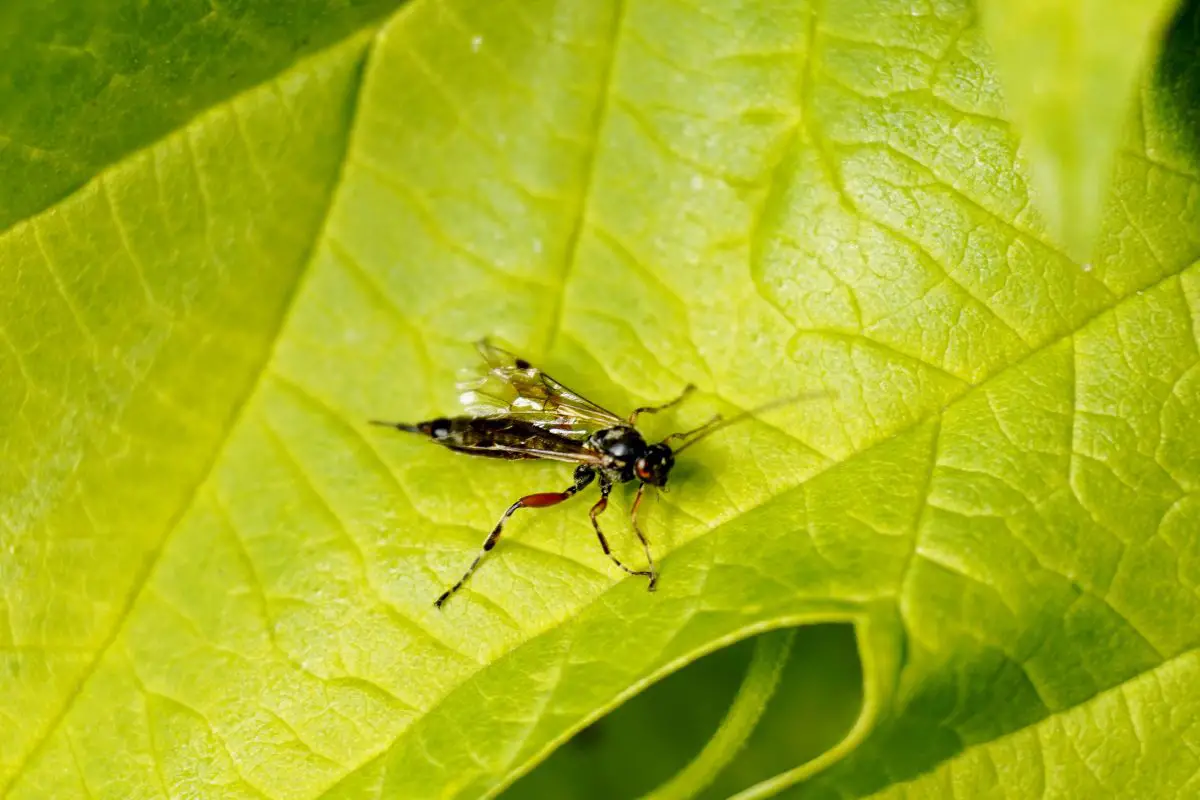
Horntails, also called wood wasps, are a family of wood-eating sawflies. These non-social insects are called horntails because of the prominent spiny structure at the end of their abdomen. This structure is used to pierce the bark of host plants where females lay their eggs.
Horntails use their ovipositors to insert eggs underneath bark, in the wood itself. Once eggs hatch, horntail larvae burrow into the tree’s wood and live inside for two years or more. Horntails can be brown and black with yellow or red parts, and some even sport blue colorations.
Some horntails, like the pigeon horntail, can reach sizes of up to two inches.
6. The Soundtrack of Awkward Moments
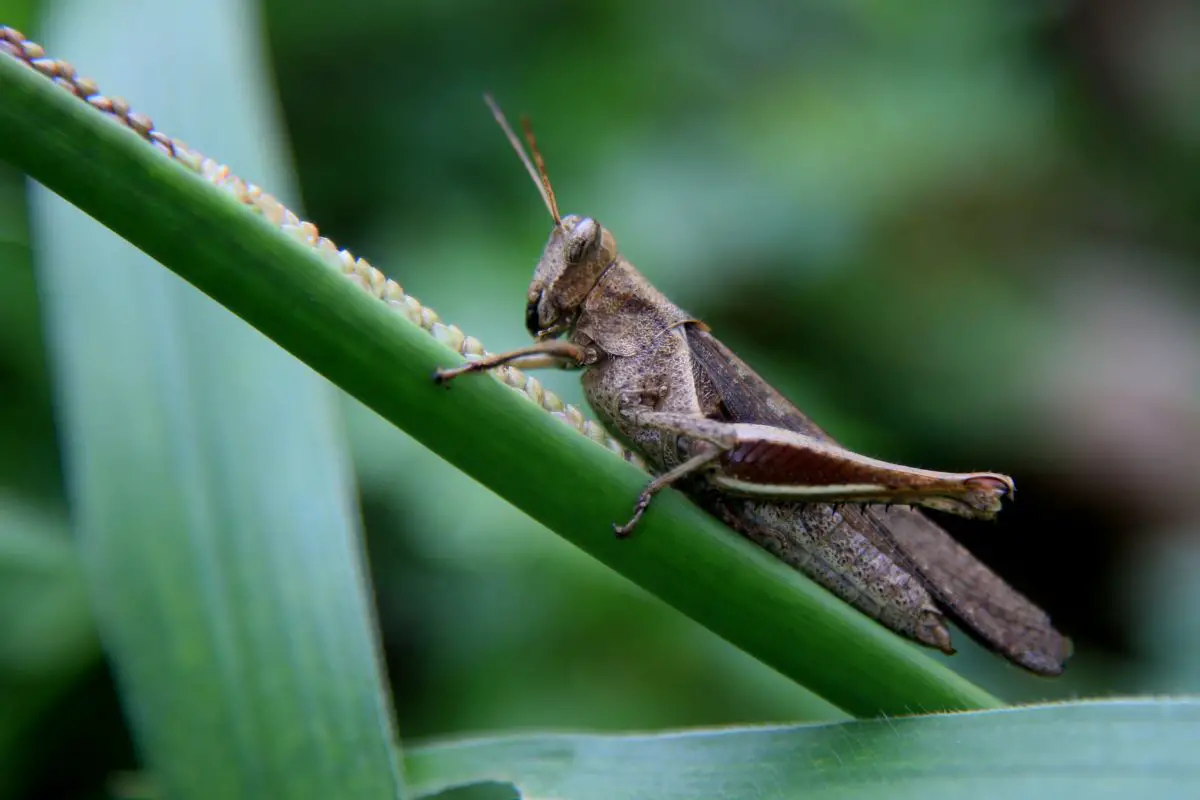
Crickets are insects related distantly to grasshoppers. They have cylindrical bodies with round heads sporting long antennae. They possess a smooth, prominent pronotum behind the head and the abdomen ends in two long cerci.
Female crickets also possess an elongated cylindrical ovipositor. Crickets possess hind legs with enlarged femora for increased jumping prowess. They possess front and hind wings, with some species rubbing parts of their front wings together to make their characteristic chirp.
Their hind wings remain folded when not being used to fly. Crickets can be found around the globe below a latitude of 55°. Most cricket diversity is concentrated in the tropics.
Crickets range in habitat from grasslands and forests to marshes, caves, and beaches. These insects are mostly nocturnal. Most males make a loud chirping to attract females, while a few species are entirely mute. Singing species have specially enhanced hearing due to their front legs giving increased sensitivity.
7. Starting Plagues Since the Triassic Era
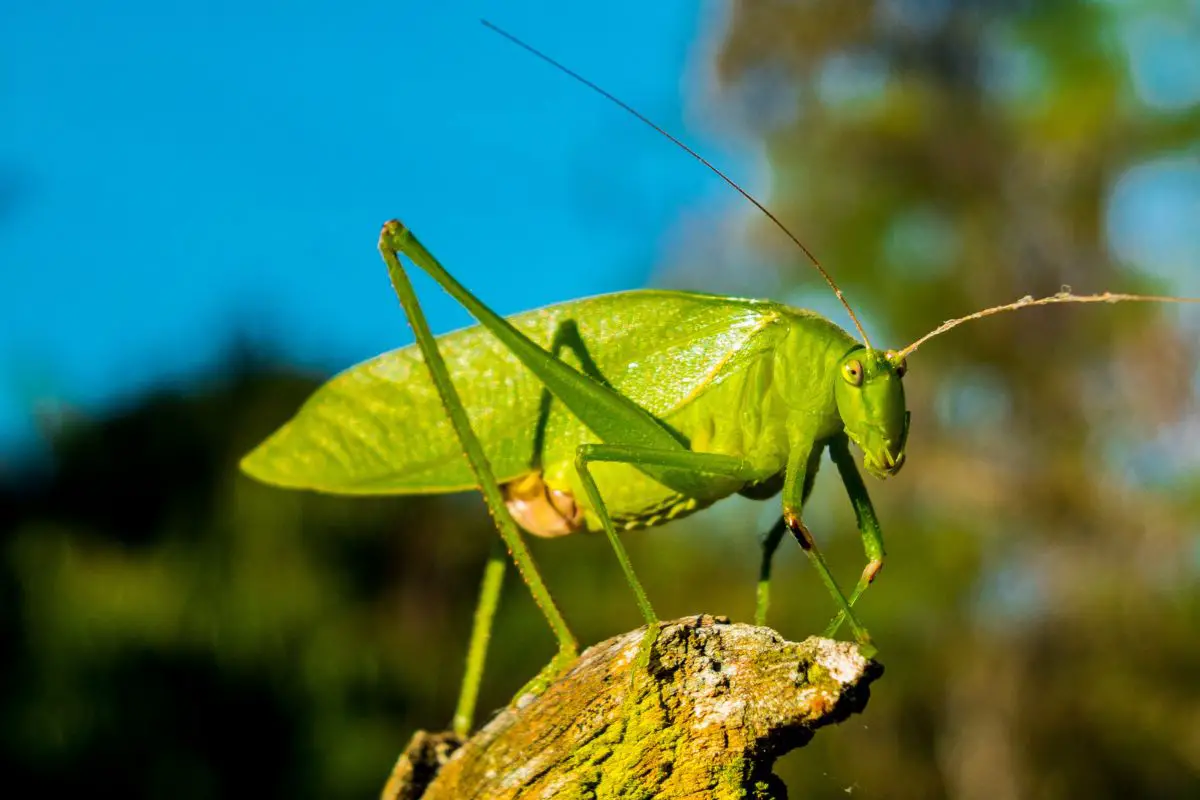
Grasshoppers are some of the oldest insects in the world that are herbivorous and classified as “chewing insects”. They have been around since the Triassic Era approximately 250 million years ago. Modern grasshoppers are a part of the order orthoptera and the suborder caelifera.
There are approximately 11,000 species of grasshopper around the world, characterized by their long antennae and powerful hind legs that they use to jump. Some grasshopper species engage in ant mimicry during early development, with nymphs looking almost identical to ants. This allows the vulnerable nymphs to take advantage of ant colonies’ protection and food sources.
8. Darwin Would be Proud
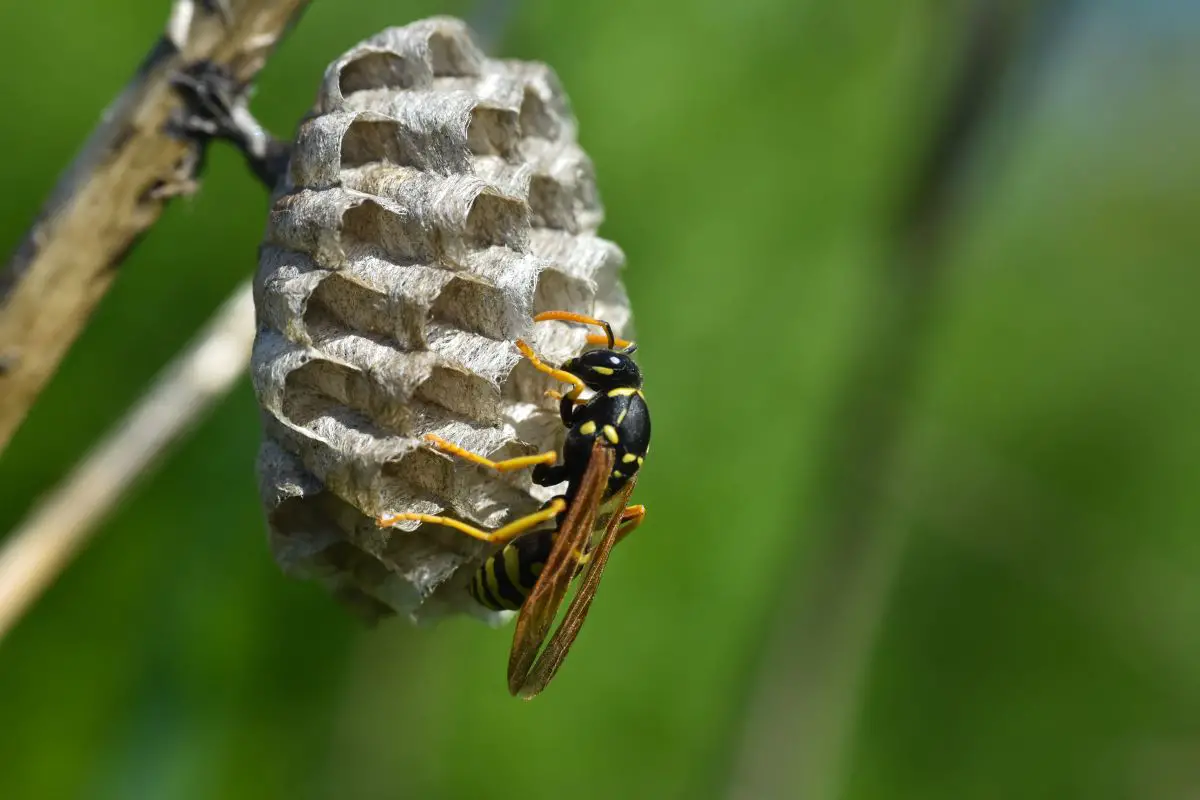
A Darwin wasp is a parasitic wasp that is a part of the suborder hymenoptera, meaning that they are distantly related to ants. This small wasp is distinctive because of its many body segments (it may have sixteen or more), slender torso, and two sets of wings. These wasps are parasitic because they sting a host (often a spider) to incapacitate it before laying eggs inside the body, which then serves as both shelter and food for larvae.
These wasps engage in ant mimicry, copying the movements of ants to access food. It isn’t known exactly how many species of Darwin wasps exist, but some estimates put them at approximately 25,000. Because of their methods of egg laying, they play an important role in biological control of insect populations.
9. Lycaeni-What?
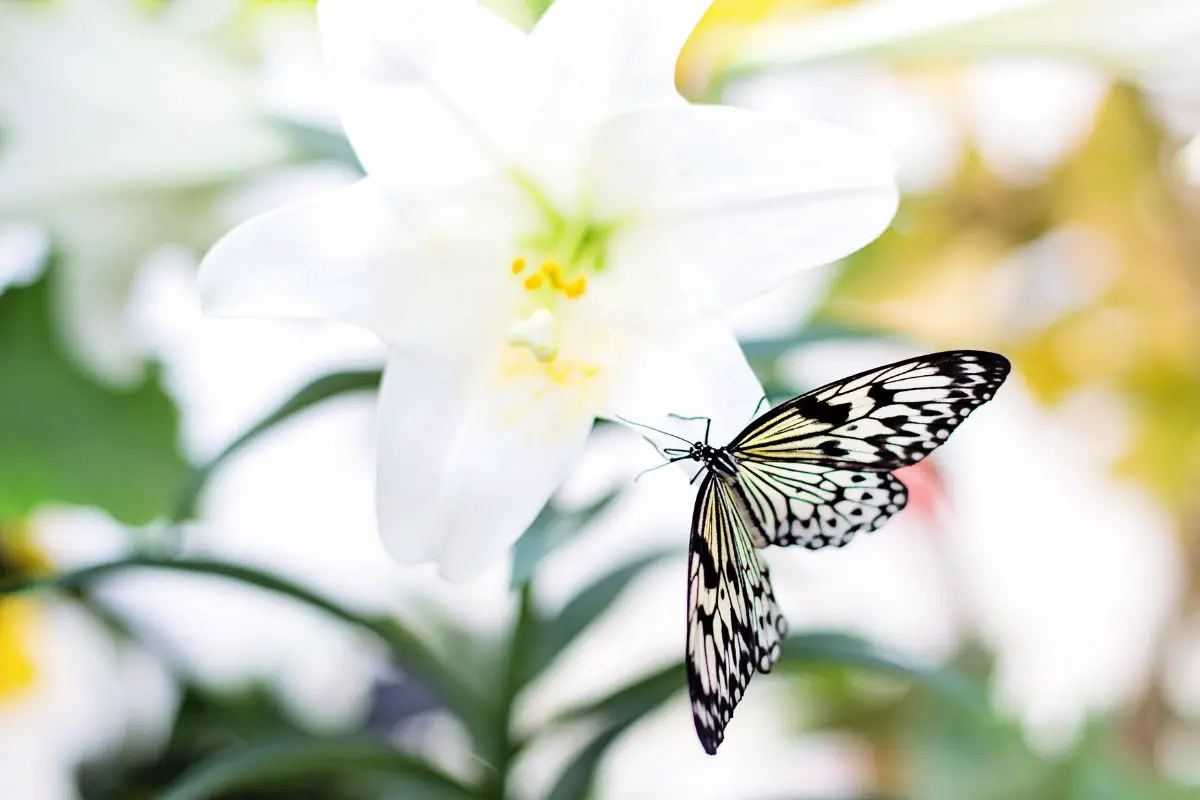
Butterflies in the lycaenid family are extraordinarily common — in fact, it’s estimated that as much as 30 percent of known butterfly species fall into this family. These butterflies are often blue in color and may be known as gossamer-winged butterflies. They engage in a fascinating form of ant mimicry that has evolved to be an adaptive relationship.
By mimicking the smell of chemical secretions, some kinds of lycaenidae species can compel ants to protect their larvae (rather than prey upon it). This is one of the more complex and interesting types of ant mimicry known as Batesian mimicry, or the secretion of ant-like pheromones.
10. A Pest by Any Name
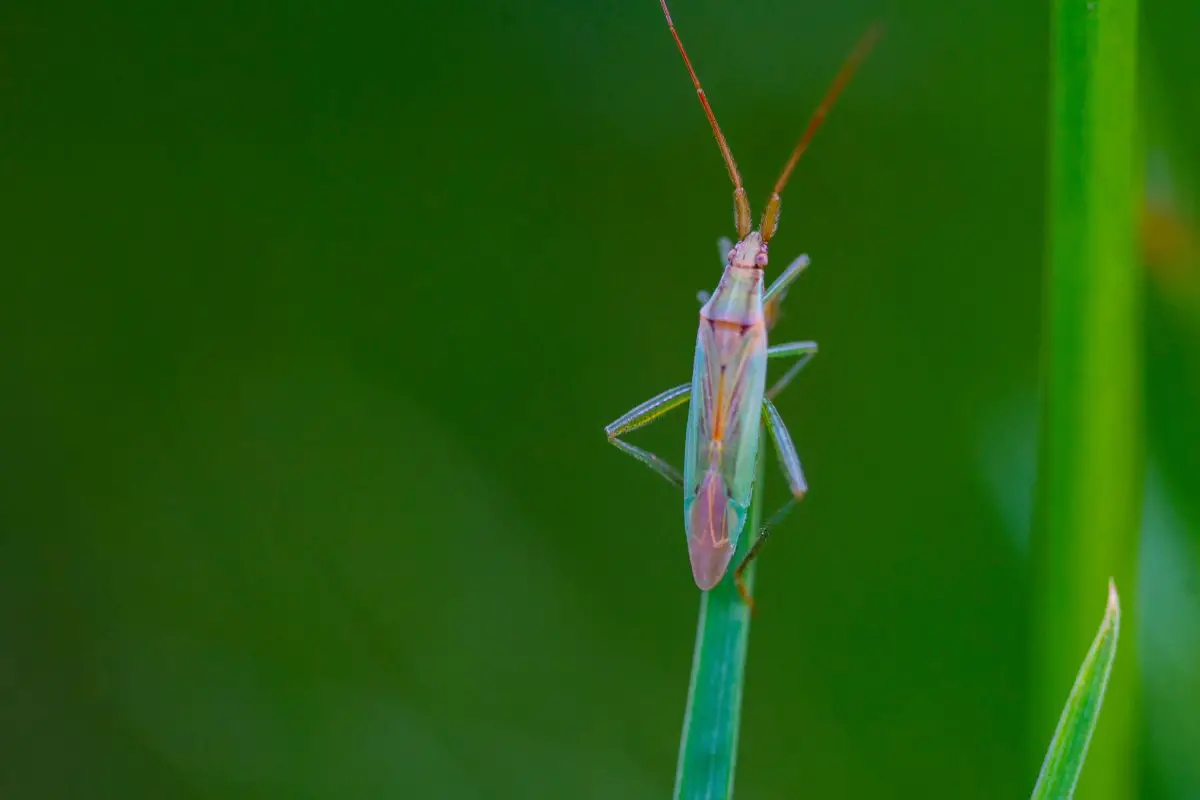
A grass bug is a species in the family miridae, a wide-encompassing term for many of the bugs in this category. These flightless bugs are often pests and can invade gardens to pierce crops and suck the sap out of them. While they do not share many similarities with ants in terms of genetic relation, grass bugs engage in ant mimicry, bearing a modest resemblance that they use to blend into ant colonies to find prey.
They are found throughout many parts of Europe and are particularly abundant in Southeast Asia. As their name implies, their camouflage helps them blend into thick vegetation and grasses.
11. A Farmer’s Worst Nightmare
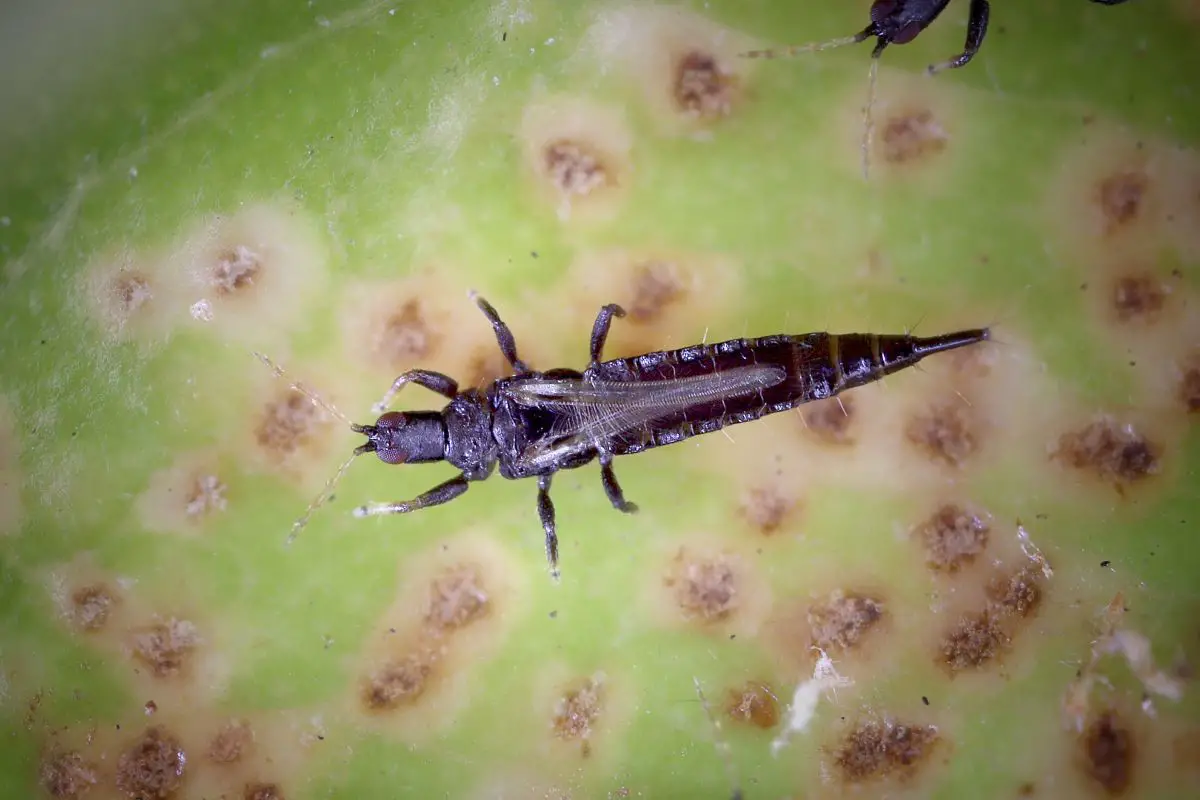
Thrips are a classification of insects in the Thysanoptera order. They are characterized by their slim bodies, weak wings, and strange, uneven mouth parts, which they use to suck juices from plants. Consequently, thrips are some of the most damaging pests, often attacking crops and spreading disease.
Many types of thrips engage in ant mimicry through their physical resemblance, which allows them to blend in with ant colonies. In fact, some female thrips have evolved to not only look but also act like ants, which may protect them from attackers.
12. The Mystery Fly With a Funny Name
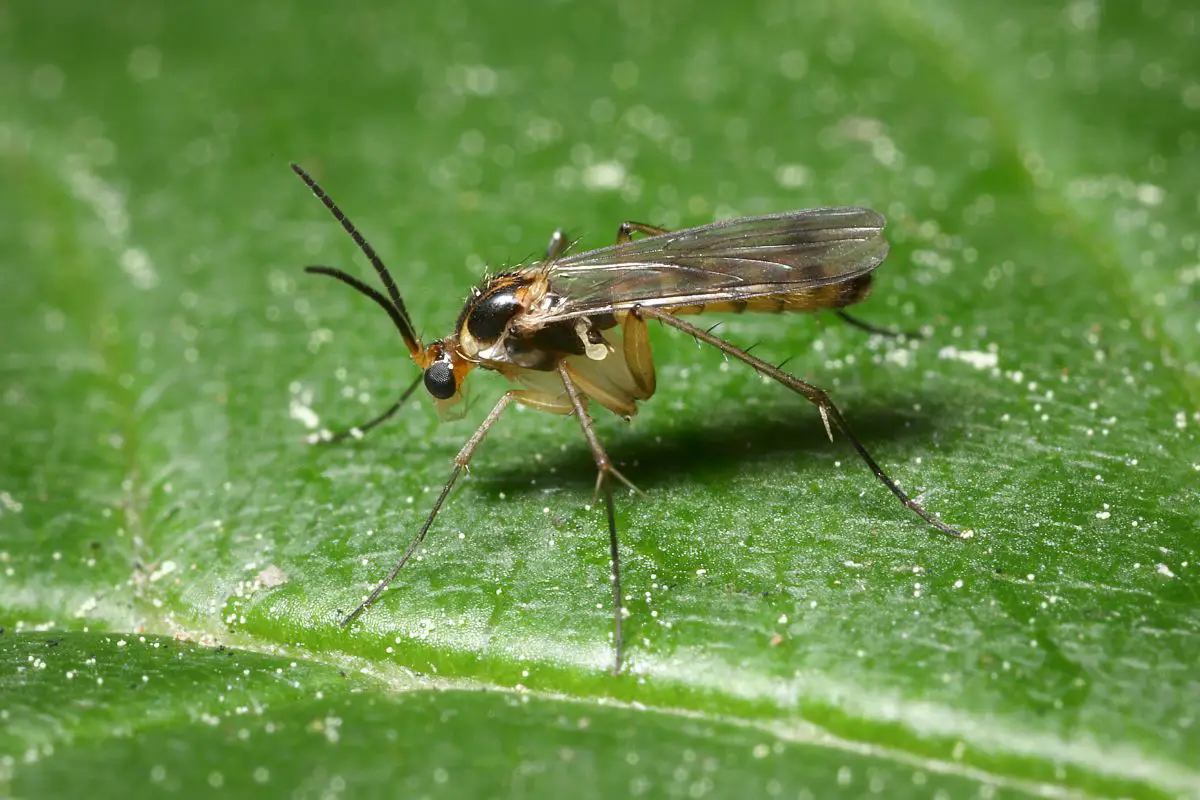
The syringogaster fly is one of many fly species that engage in ant mimicry. This type of fly has barely-visible wings that blend in with its thorax. Its physical build is extraordinarily similar to that of certain types of ants, and it can be almost impossible to distinguish them unless they spread their wings.
Unlike most flies which have large heads and bodies, the syringogaster fly has a small head and slender waist, further allowing it to blend in with ant colonies. This species is largely found in the Dominican Republic. Because these flies are limited to such a small geographical region, scientists know very little about their development, habits, or larval stages.
13. Living on a Prayer
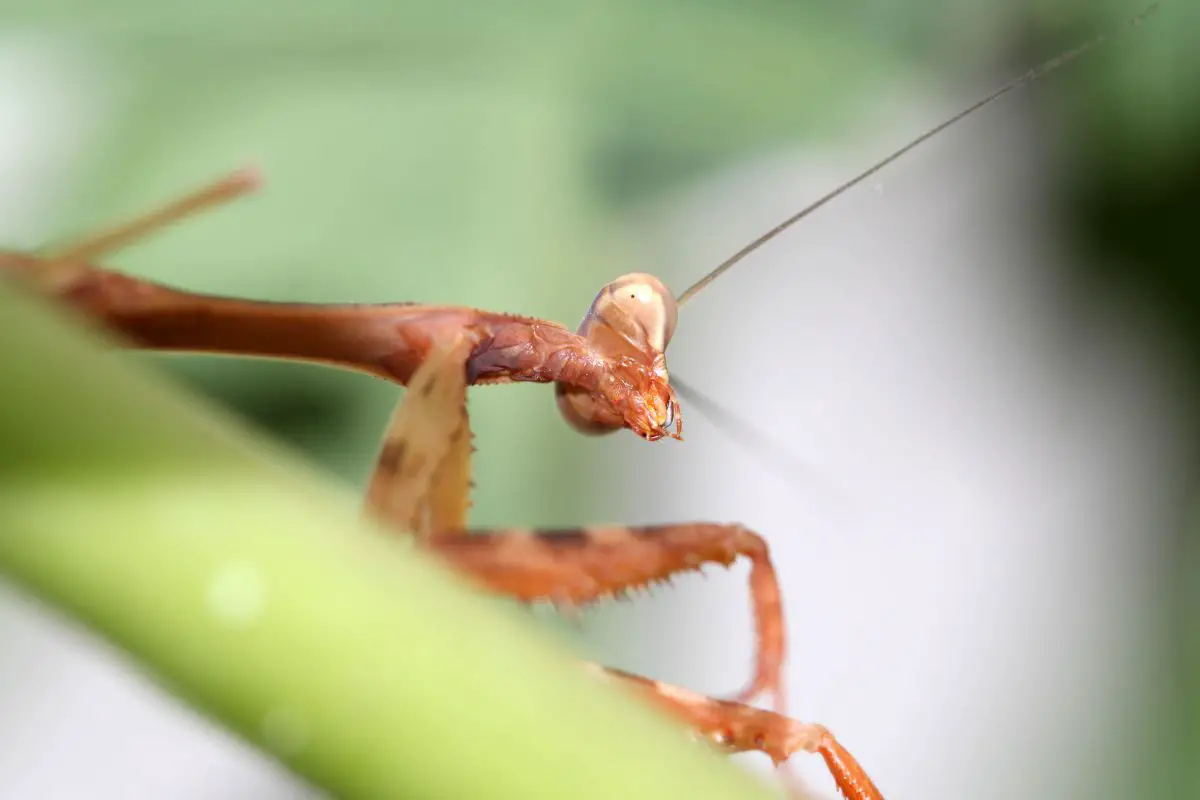
Mantises, colloquially referred to as praying mantises because of their unique forelimbs, live all over the world, mostly in tropical climates. There are more than 2,400 mantis species, characterized by their strange anatomy, which includes a triangular head, bulging eyes, and crooked front limbs. They are also known for their strange bobbing motion, which may be to imitate vegetation or to help them distinguish their own prey.
Mantises have evolved as natural mimics, earning different species the common names of bark mantis, flower mantis, leaf mantis, grass mantis, and more. Some types of mantises also engage in ant mimicry. This is because ants have been known to prey on them, and mimicry helps them slide under the notice of these predators.
Not every mantis species engages in ant mimicry, specifically, but almost all of them use mimicry of some kind to avoid predators, find shelter, and access food.
14. Not That Kind of Longhorn!
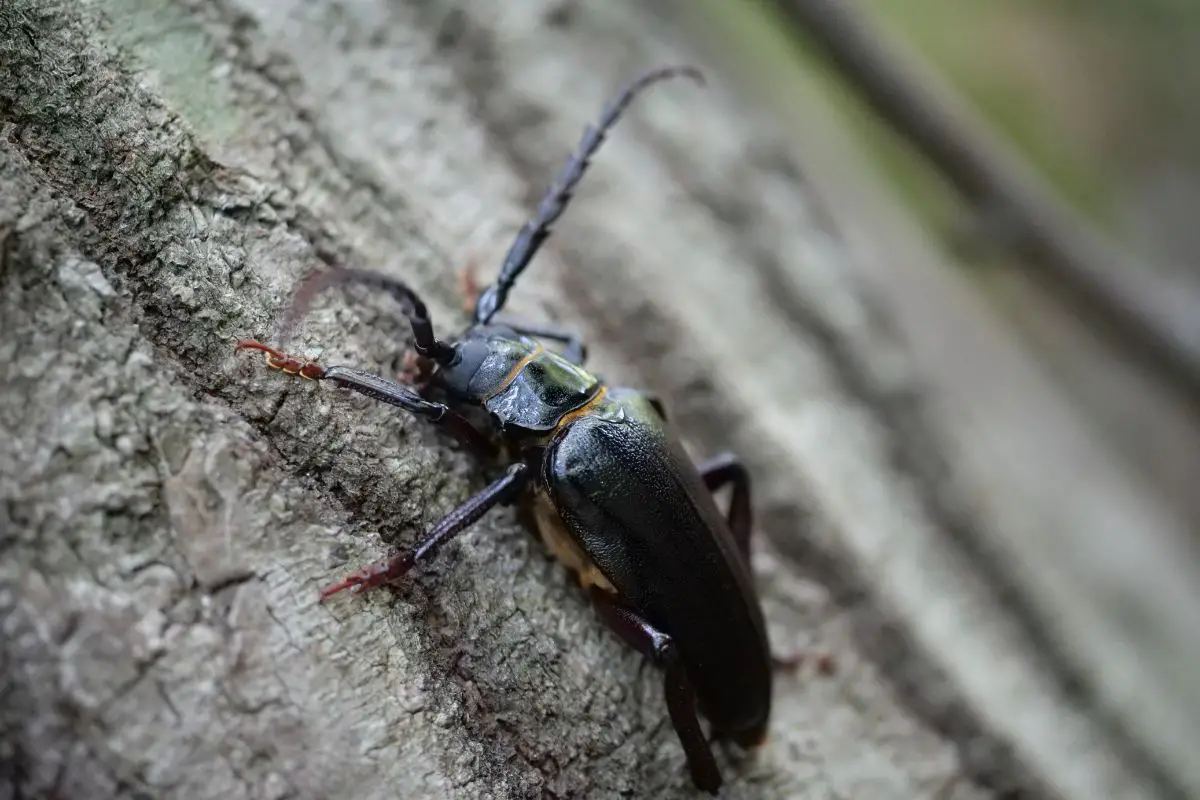
Longhorn beetle is a general description of many beetle species, characterized by their long antennae, which may be as long or even longer than their body. While different types of longhorn beetles can vary significantly in color, size, markings, and other characteristics, they also have distinctive antennae pockets on their face. Some types of longhorn beetles engage in ant mimicry, having evolved to look similar to ants in order to take advantage of the food and protection of the ant colony.
Some longhorns may also mimic bees or wasps for similar reasons; others have more generic camouflage.
15. I Wonder Where They Got Their Name
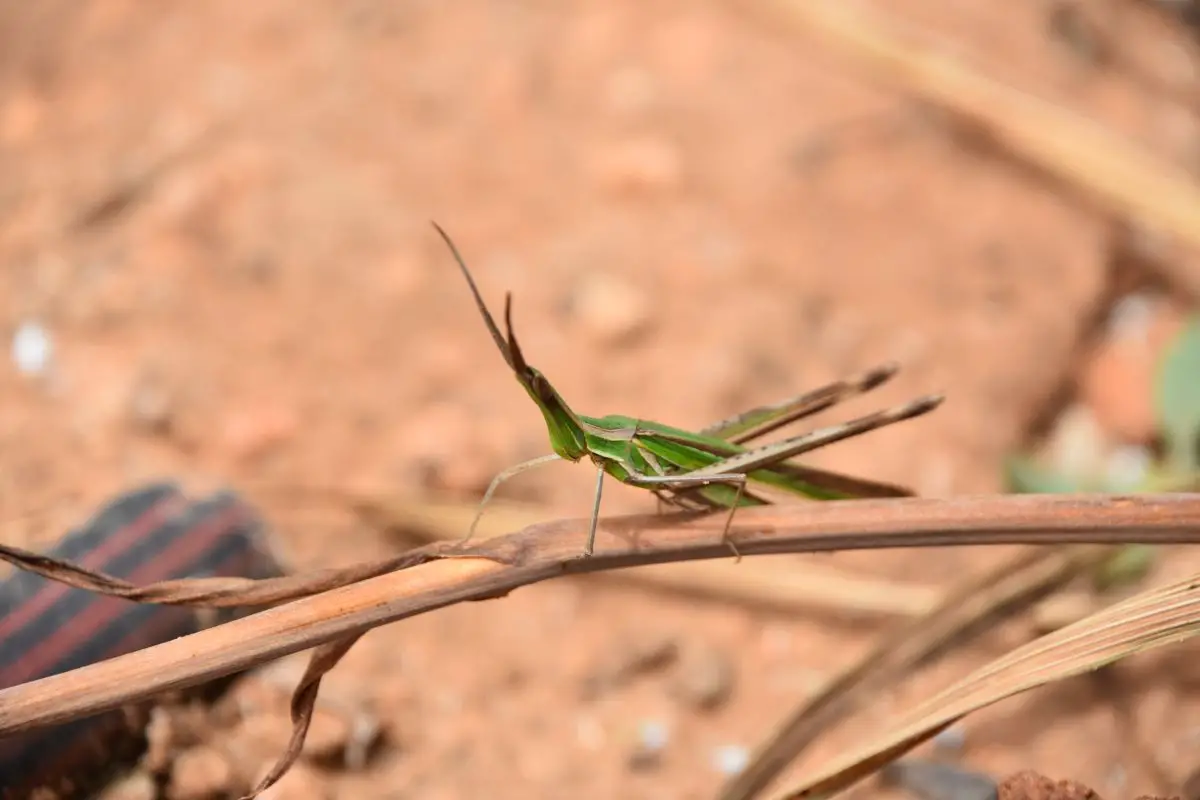
Phasmatodea, more commonly known as stick insects or walking sticks, are found all around the world. They get their name, unsurprisingly, from their resemblance to sticks or twigs, allowing them to blend into vegetation or ground cover. They are most widely found in tropical regions.
There are many species of stick insects, from tiny ones only a few millimeters long to the enormous Chan’s Megastick, which can be up to 14 inches long. Some types of stick insects engage in a unique form of ant mimicry. During their larval stage, these insects may curl their legs inward to imitate an ant.
In doing this, they are often able to trick ants into carrying them into their nest, where they receive protection and food during their vulnerable early days.
FAQs
What Insects are Most Similar to Ants?
Ants seem to be a highly unique insect species, so the question of which insect — if any — is the most similar has been much debated by scientists. Genome sequencing indicates that ants and bees share some striking similarities; in fact, they may be more closely related than bees and wasps. This sequencing shows the evolution of stinging insects such as ants and bees, where they came from, and how they are related.
Why do Insects Mimic Ants?
There are many reasons why insects mimic ants. Some forms of ant mimicry happen to protect other insects from predators — even if those predators are ants themselves. Other species mimic ants to take advantage of the resources of ant colonies, including food, shelter, and protection.
How Many Ant Species are There?
There are more than 12,000 species of ant around the world. Ants can be found on every continent except Antarctica. Some scientists have hypothesized that there may be more than one quadrillion ants on earth.



